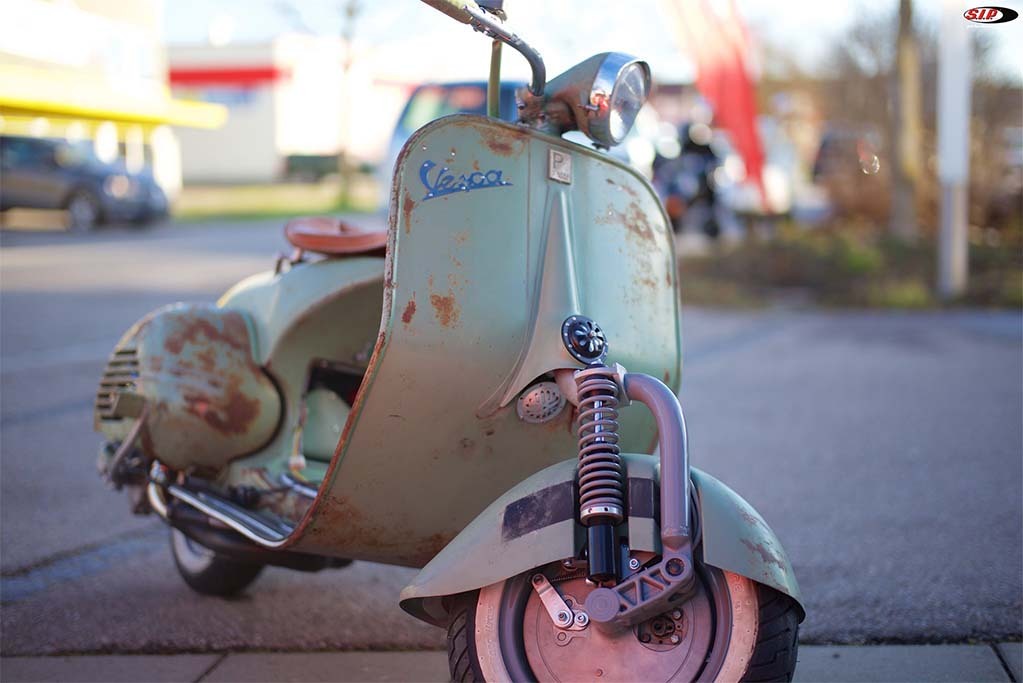“Show me your scooter and I’ll tell you who you are!”
La Dolce Vita and the Vespa belong together like lemon trees and the Italian Amalfi Coast. Italy stands for a carefree and happy attitude towards life. The origin of the Vespa leads to sun-drenched and geographically boot-shaped Italy. The “Wasp” was brought to life by the Italian company Piaggio. It unexpectedly sparked a small motorized two-wheeled revolution on the roads. With its cheerful and bright colors, the Vespa is one of the most popular and world-renowned motorized scooters. Riding a Vespa is simply a lifestyle with style.
The first Vespa came on the market in 1946 and was called “Paperino”. Paperino means “duckling” in English. Although at 60 km/h it was definitely faster than a small yellow duck, with rather little horsepower it was a comfortable vehicle. The Italian engineer Corradino D’Ascanio, the inventor of the Vespa, probably did not anticipate the wave of enthusiasm he set in motion worldwide. However, the project was commissioned by Enrico Piaggio. His vision was based on the idea that a person could sit comfortably and get around on two wheels.
A wave of enthusiasm was unleashed around the globe
Piaggio was founded in 1884 in Pontedera near Pisa. The brand remains a leader in the field of motorized two-wheelers to this day. After World War II, the entrepreneur thought about how people could move forward on the roads damaged by the war as cheaply as possible. Piaggio Air produced special war planes during WW2. The aeronautical designer Corradino D’Ascanio thus became the inventor of the Vespa, or rather implemented the ideas of the entrepreneur Enrico Piaggio.
In 1946 the starting signal was given with the patenting. To this day, virtually nothing has changed in the classic design of the scooter. Over 16 million of the traditional scooters have already been produced. The scooter is particularly popular with female drivers. The cult scooter is easy to ride even in a dress and skirt. The pictures from the 50s and 60s are familiar to everyone. The women in chic clothes and a bandana around the head enjoy life with their Vespa. The sweet life has begun again and until today the origin of the Vespa cannot be denied. Fashionably, the body was adapted somewhat. However, the classic cult design was never touched.
“Clapperboard: Next one please!”
For decades, no screen classic could get past the Vespa when it came to depicting the post-war life of society. Hollywood greats adorned themselves with the quickly infamous motor scooter. The Vespa was emblematic of the spirit of optimism, just as rock ‘n roll, the plate skirt and the economic miracle were to an entire generation.
People loved their scooter. A multitude of Vespa clubs were founded worldwide. In 1980 even a Vespa veterans register was founded. In the 80s and 90s a new hype arose around the iconic scooter. Even today, the fan community around the cult scooter itself stands for a hip and stylish movement. Anyone who rides a Vespa is self-confident, charismatic and consciously walks in the footsteps of the light and carefree life.



